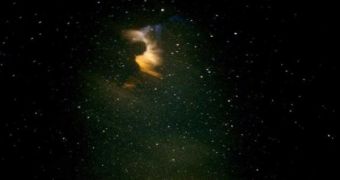People in central and eastern Asia will be very lucky this year, as the most wonderful sight of the renowned Leonid meteor shower will be observable form their region. Astronomers predict that as many as a few hundred balls of fire will become visible for brief periods during several hours. According to experts, the shower will reach its peak intensity at around 21:40 GMT, when it would be ideal for whoever can look at the sky, towards the constellation of Leo, Space reports.
For the residents of North America, namely the United States and Canada, it may be possible to view the Leonid meteor shower's peak activity anytime between 3:30 and 5:30 am EST (0830 and 1030 GMT). The shower will not be highly visible throughout the two countries, therefore only residents on the eastern, Atlantic coasts will get to see the “falling stars.” A positive aspect of this year's event will be that the new Moon will be on November 16, which means that the night skies will be dark and suited for astronomical observations.
“The year 2009 will not see a Leonid storm, but an outburst for sure. [However], there are still some uncertainties,” French astronomer Jeremie Vaubaillon says. In order for such an event to classify as a storm, it needs to produce more than 1,000 meteors per hour, whereas this year's Leonid is expected to produce about 500 tops. The space rocks that will burn in the Earth's atmosphere are in fact leftover debris from the comet Tempel-Tuttle. Our planet's orbit will take us directly through the cloud of junk that the celestial body left behind as it swirled past at a safe distance from the Earth.
The last time the comet Tempel-Tuttle passed through the inner solar system was in 1998, and it left behind a massive trace of debris. Yearly, the planet flies close to it, at various distances. These are the determining factors that dictate exactly how powerful a Leonid event will be. For 2009, astronomers estimate that the Earth will pass within 42,000 miles (68,000 kilometers) from the center of the cometary trail.

 14 DAY TRIAL //
14 DAY TRIAL //